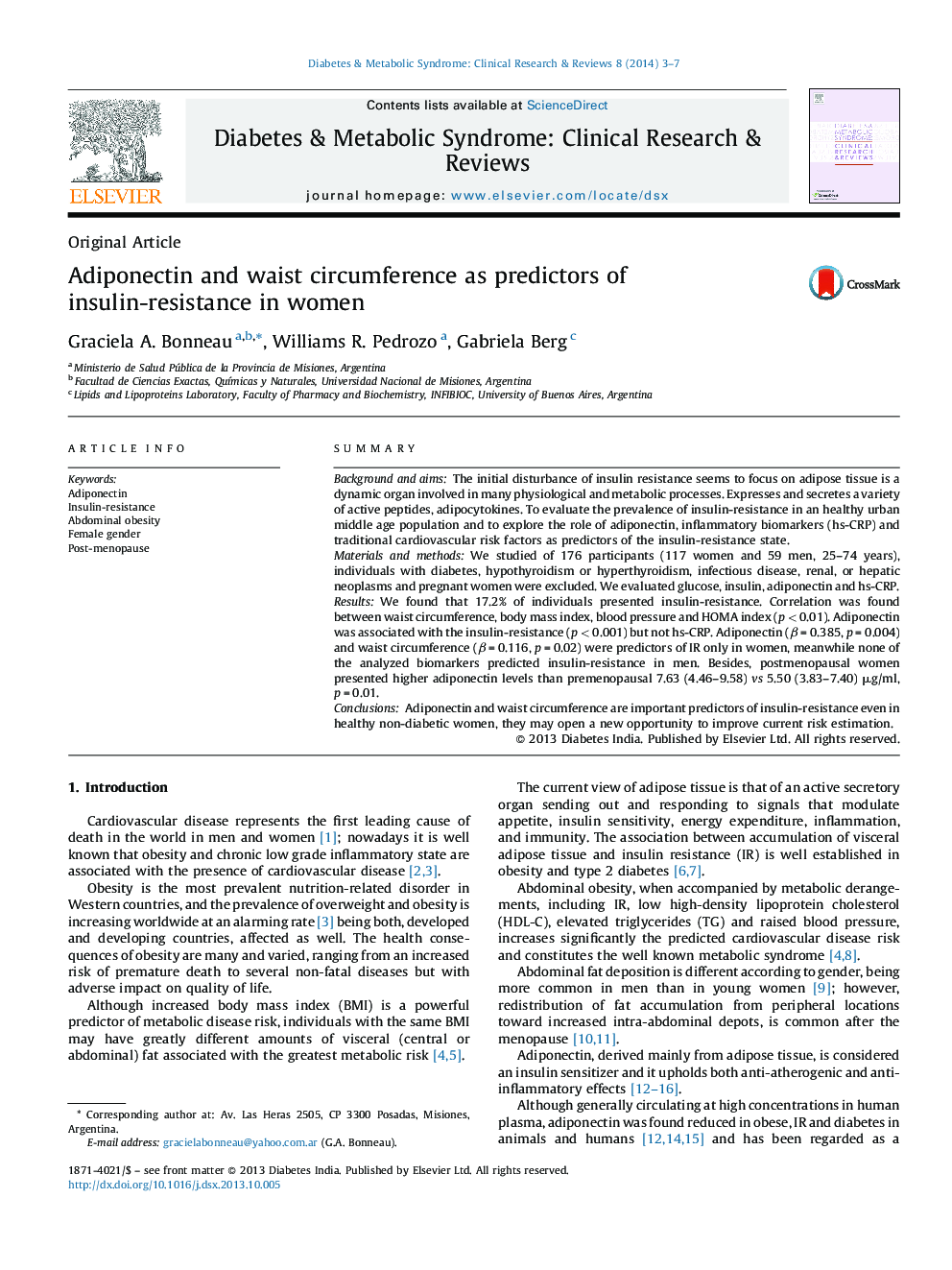| Article ID | Journal | Published Year | Pages | File Type |
|---|---|---|---|---|
| 2910207 | Diabetes & Metabolic Syndrome: Clinical Research & Reviews | 2014 | 5 Pages |
SummaryBackground and aimsThe initial disturbance of insulin resistance seems to focus on adipose tissue is a dynamic organ involved in many physiological and metabolic processes. Expresses and secretes a variety of active peptides, adipocytokines. To evaluate the prevalence of insulin-resistance in an healthy urban middle age population and to explore the role of adiponectin, inflammatory biomarkers (hs-CRP) and traditional cardiovascular risk factors as predictors of the insulin-resistance state.Materials and methodsWe studied of 176 participants (117 women and 59 men, 25–74 years), individuals with diabetes, hypothyroidism or hyperthyroidism, infectious disease, renal, or hepatic neoplasms and pregnant women were excluded. We evaluated glucose, insulin, adiponectin and hs-CRP.ResultsWe found that 17.2% of individuals presented insulin-resistance. Correlation was found between waist circumference, body mass index, blood pressure and HOMA index (p < 0.01). Adiponectin was associated with the insulin-resistance (p < 0.001) but not hs-CRP. Adiponectin (β = 0.385, p = 0.004) and waist circumference (β = 0.116, p = 0.02) were predictors of IR only in women, meanwhile none of the analyzed biomarkers predicted insulin-resistance in men. Besides, postmenopausal women presented higher adiponectin levels than premenopausal 7.63 (4.46–9.58) vs 5.50 (3.83–7.40) μg/ml, p = 0.01.ConclusionsAdiponectin and waist circumference are important predictors of insulin-resistance even in healthy non-diabetic women, they may open a new opportunity to improve current risk estimation.
